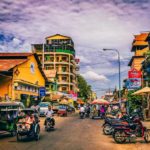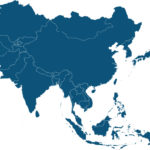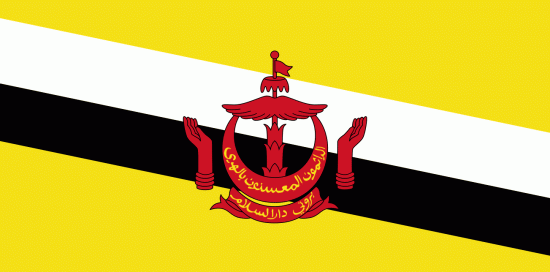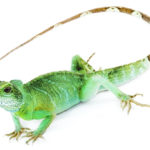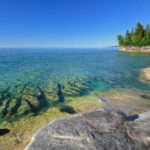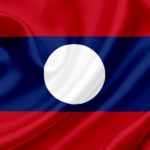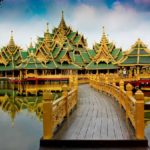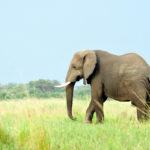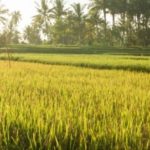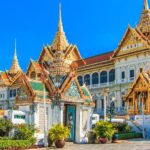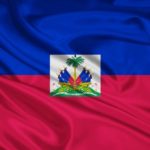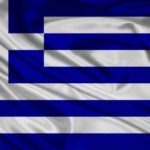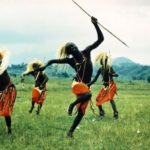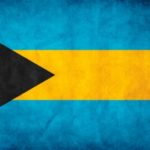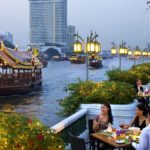Interesting facts about Cambodia
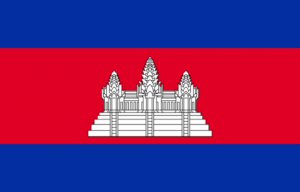 Cambodia is a country in southeast Asia with a rich history and an uneasy fate. After the reign of the Khmer Rouge, this country has relatively recently begun to recover, making a reasonable bet on attracting tourists. I must admit that this calculation proved to be correct – at present Cambodia can already compete with neighboring Thailand in this respect.
Cambodia is a country in southeast Asia with a rich history and an uneasy fate. After the reign of the Khmer Rouge, this country has relatively recently begun to recover, making a reasonable bet on attracting tourists. I must admit that this calculation proved to be correct – at present Cambodia can already compete with neighboring Thailand in this respect.
In Cambodia, as in many other countries of Southeast Asia, people often say hello, “Have you already eaten rice?”. A polite answer is “yes”, even if it is not true.
American bombers dropped a total of 2.75 million tons of bombs on Cambodia.
Cambodia remains one of the most “mined” countries in the world – this is the result of three decades of war and civil conflict. Several million mines are dispersed on the territory of the state, because of which, since 1979, more than 57 thousand Cambodians have lost their limbs.
Cambodian forests due to cutting down are almost record for Earth at a pace – in the middle of the last century they occupied 70% of the country’s territory, and by 2007 this figure was reduced to 31%.
The temple complex of Angkor Wat is the largest cult structure in the world – its area is 1270 by 1500 meters. It is dedicated to the Hindu god Vishnu and is located in the center of the country.
A traditional Cambodian dish is a pasta made of sauerkraut, called “praokh”. Local residents also eat grasshoppers, spiders, snakes, frogs and other exotic dishes.
In Cambodia it is not customary to give names to the streets, as a rule they are simply numbered. Only some streets in the capital of the state of Phnom Penh received the name under the influence of Europeans.
Cambodian currency riel is represented only by banknotes, there are no coins in circulation.
In the past, money for Cambodia was printed in Russian Perm at the Gosznak factory.
Khmers, who make up the main population of Cambodia, often spice up with ten sauces at the same time.
The Khmer alphabet entered the Guinness Book of World Records as the largest in the world – it consists of 72 letters.
The word “Yes” for women and men in Cambodia is pronounced in different ways.
Between 1863 and 1999, the flag changed 10 times in Cambodia. The current flag of the kingdom is the only flag in the world that uses the image of the building (complex Angkor Wat).
Lake Tonle Sap, located in the heart of the country, is second only to the Amazon by the number of species of fish that are found in it.
Names of newborn Cambodians, as a rule, are given by a Buddhist monk specially invited for this purpose.
Many Khmers have two names – one for family and friends, the second for all others.
Most of the inhabitants of Cambodia, born between 1975 and 1990, do not celebrate birthdays – in part because in the heat of civil war no one had to remember the exact date of this event.
For four years, during which the Khmer Rouge was in power, a fifth of the population of Cambodia was killed, primarily the most educated people.
Currently, more than half the population of Cambodia is not even 15 years old.
The central market of Phnom Penh is considered to be the largest in Asia.
The first bridge across the Mekong River, which connected the east and west of the country, appeared only in 2001.
Floating Cambodian villages drifting along Lake Tonle Sap represent simply large clusters of boats, between which are formed a kind of streets. Children move between them in basins. The governments of Japan and Switzerland presented the Cambodians with a large boat-church and boat schools.


